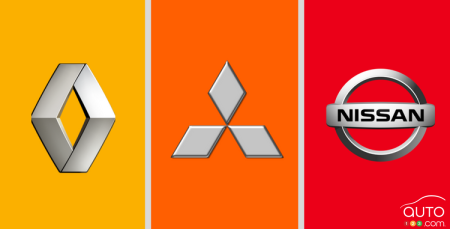
The Renault-Nissan-Mitsubishi Alliance made an announcement this week that is nothing if not ambitious. The three automakers plan to introduce 35 new electric vehicles worldwide by 2030, a mere eight years from now.
North America won't see all of these models, rest assured. Some of the Kei-type models will be reserved for the Japanese market, while others will be aimed at the commercial van market. Nevertheless, several of the models to come will surely be marketed here.
There was more to the announcement: the Alliance also confirmed that the development of solid state batteries is in its plans.
The three manufacturers will obviously benefit from the economies of scale generated by the nature of their association. In fact, many of the Alliance's models are already based on a common structure. The Nissan Sentra, for example, shares its underpinnings with the third-generation Renault Scenic. Here, Nissan's Rogue and Mitsubishi's Outlander have several elements in common.
There will be more of that cross-pollination. In the future, the aim is to build 80 percent of the vehicles in the group's global portfolio on common architectures. Renault, Nissan and Mitsubishi are massive companies with many models of different types, so there’s a limit to how much harmonization is possible, but the Alliance can work towards relying on a limited number of platforms. The strategy envisions five.
Those five platforms will target the following niches: the CMF-AEV for affordable electric cars; the KEI-EV for Kei models; the LCV for commercial products; the CMF-EV to support mainstream models such as the Ariya SUV; and the CMF-BEV as the foundation for about 250,000 electric vehicles that will be built annually beginning in 2024.
Most of the new vehicles will be equipped with a lithium-ion battery, a technology that remains the best way to power an electric model for now. However, Nissan has been tasked with developing a solid-state battery technology that promises to dramatically reduce charging times. Such a unit is expected to go into production in mid-2028. It remains to be seen which models will get it at that time.
Connected services will also receive special attention. We will come back to that later.
In total, these investments will require the injection of at least 23 billion Euros over the next five years, or roughly $32.7 billion CAD.



